Breeding Worth
15 min read
Breeding worth (BW) is tool for making informed breeding decisions that enhance herd profitability through improved genetic merit. BW is an index used to ranks cows and bulls based on how well they align with the National Breeding Objective (NBO); to breed dairy cattle that efficiently convert feed into profit. This overview outlines the traits that contribute to BW into two groups: 'Production Efficiency' and 'Robustness'. You'll also find tips for selecting the most suitable bull for your breeding goals and how to boost BW on farm with five practical steps.
Breeding Worth is a breeding index used in New Zealand to rank dairy cows and bulls based on their ability to produce profitable replacements. It is a tool that supports breeding decisions to improve herd profit through genetic gain. Cows and bulls are ranked on their ability to meet National Breeding Objective using the index known as Breeding Worth (BW). The National Breeding Objective is to breed dairy cows that efficiently convert feed into profit.
Maximise profitability with Breeding Worth
Use BW to help make breeding decisions on which bulls and cows to breed replacements from and to help you achieve a genetically strong herd - increasing farm profit each year. Your breeding plan will set you up for future seasons and have a lasting impact on your herd.
The information you choose to focus on will depend on what your herd breeding objective is. While you won’t see changes immediately in your herd, the decisions you make now will have an impact on your production for seasons to come. Knowing you have accurate and meaningful on-farm data in Breeding Worth is critical to aid your decision-making.
Need a quick guide to breeding decisions? Start here.
BW is calculated by combining the appropriate Breeding Value traits with corresponding Economic Values for each trait and adding them all together.
The formula is:
BW = BV × EV (summed across traits)
BW is expressed as dollar value of net farm income per five tonnes of dry matter. Animals will only pass on half their BW to their offspring. For example, a bull whose BW is $300 is expected to produce daughters that are on average $150 (half of the bull’s BW) more profitable than a bull whose BW is $0. Importantly, animals can be compared using BW across different breeds, herds, farms and ages.
Economic Values (EV): An estimate of the dollar value of a unit change in each trait to an NZ dairy farmer.
Breeding Values (BV): An estimate of a cow or bull's genetic merit for a trait. e.g. Will his or her daughters produce milksolids efficiently, and be robust herd members? These traits are selected for their direct impact on farm profitability.
BW includes ten BV traits grouped into two categories:
Production Efficiency
Robustness
There are ten breeding value traits included in BW that have been identified as having a direct economic value to the NZ dairy sector. These traits can be categorised as either 'Production efficiency' traits or 'Robustness' traits. The effective emphasis of the individual traits within BW are split between 66% production efficiency traits and 34% robustness traits (see pie chart below).
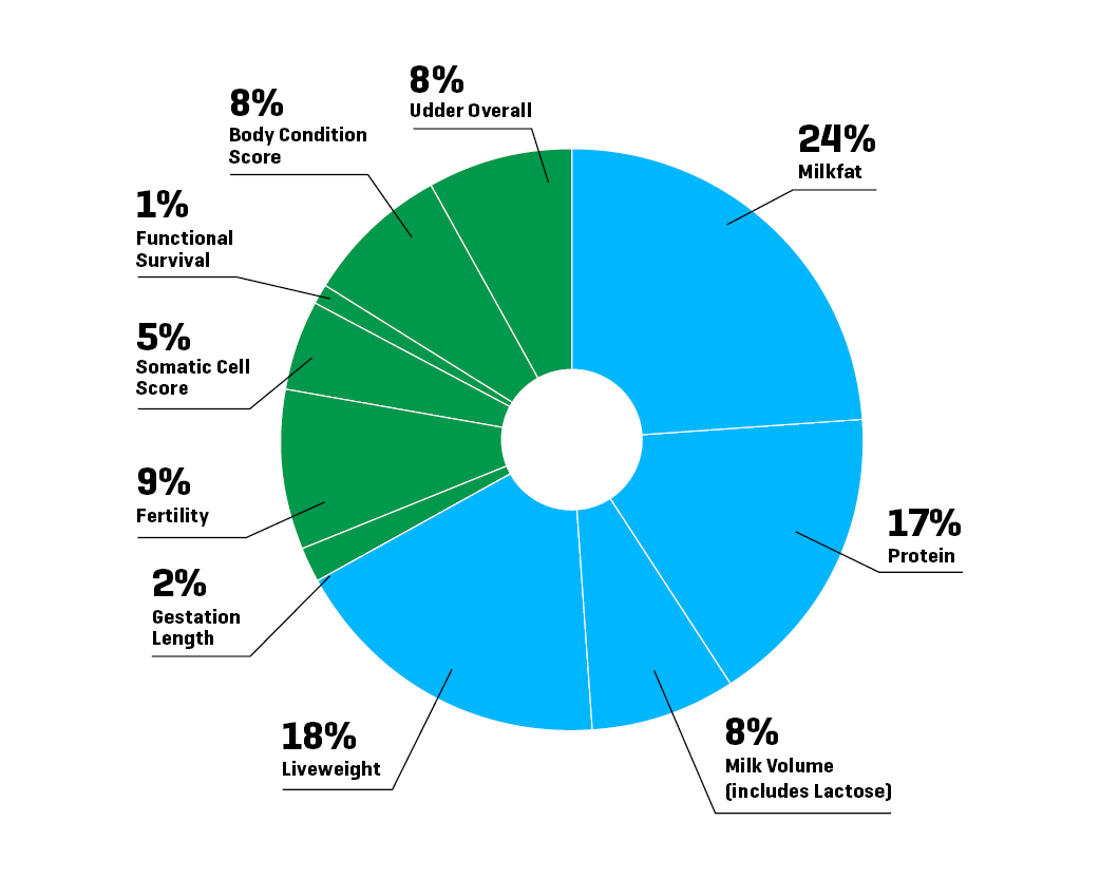
Effect emphasis on the individual traits within BW pie graphs 2025
Cows that produce more protein and fat will bring in more income for the dairy farm business.
Cows that produce the same quantities of fat and protein but with higher volume incur costs to the dairy farm business. The Milk Volume EV has been primarily adjusted to incorporate lactose, reflecting the strong correlation with lactose yield and reflect majority of the milk payment structures.
On farm, the breeding focus should remain on fat and protein, as these are the key drivers of milk income and carry the highest economic weighting in breeding values.
Included in BW as the 'efficiency' part of production efficiency. There is a positive relationship between liveweight and milk production and between liveweight and feed requirements for maintenance and growth. If this was not included, selection on milk production would lead to successive generations getting heavier and the costs to feed these heavier cows would increase.
Cows with lower somatic cell counts have better survival, lower costs due to mastitis, and fewer penalties due to bulk tank somatic cell count being lower.
Fertile cows have better longevity and lower empty rates. Higher in-calf rates to high genetic merit bulls through artificial insemination reduces the need for natural mating bulls.
Short gestation length increases the number of days in milk, allows a cow more time to recover from calving and provides an opportunity for a condensed calving period.
Cows that fail for functional reasons such as udder breakdown have reduced longevity and lead to increased costs associated with rearing more replacements. Having more mature cows in the herd (the engine room of the herd) will positively impact profitability.
Cows that maintain condition easily can be dried off later. This increases days in milk and boosts potential production and profit, compared with cows that lose condition easily.
Cows with poor udder conformation add costs to the farm system due to an increased risk of developing mastitis or being culled due to their udder failing.
The other number that is reported alongside BW is reliability. Reliability measures how much information has contributed to the BW evaluation for that animal. Reliability is shown on a scale of 0 to 100%, with reliabilities closer to 100% representing more information on progeny and ancestors being available for that bull.
High-reliability bulls are unlikely to have large shifts in their BW when more daughters are added. In contrast, bulls with lower reliabilities are more likely to have large shifts in their BW as we add more daughters.
Genetic merit sets the foundation for the performance of your dairy herd. The information below guides you through five ways to enhance your herd's Breeding Worth. Each action contributes to building a stronger herd, and the more strategies you combine, the better the results.
The national herd improves every year, and the value of this compounds over time. However, the underlying foundation is herd reproductive performance. Getting more of the right cows in-calf to high-genetic merit bulls will enable options to select the best replacements and accelerate genetic gain.
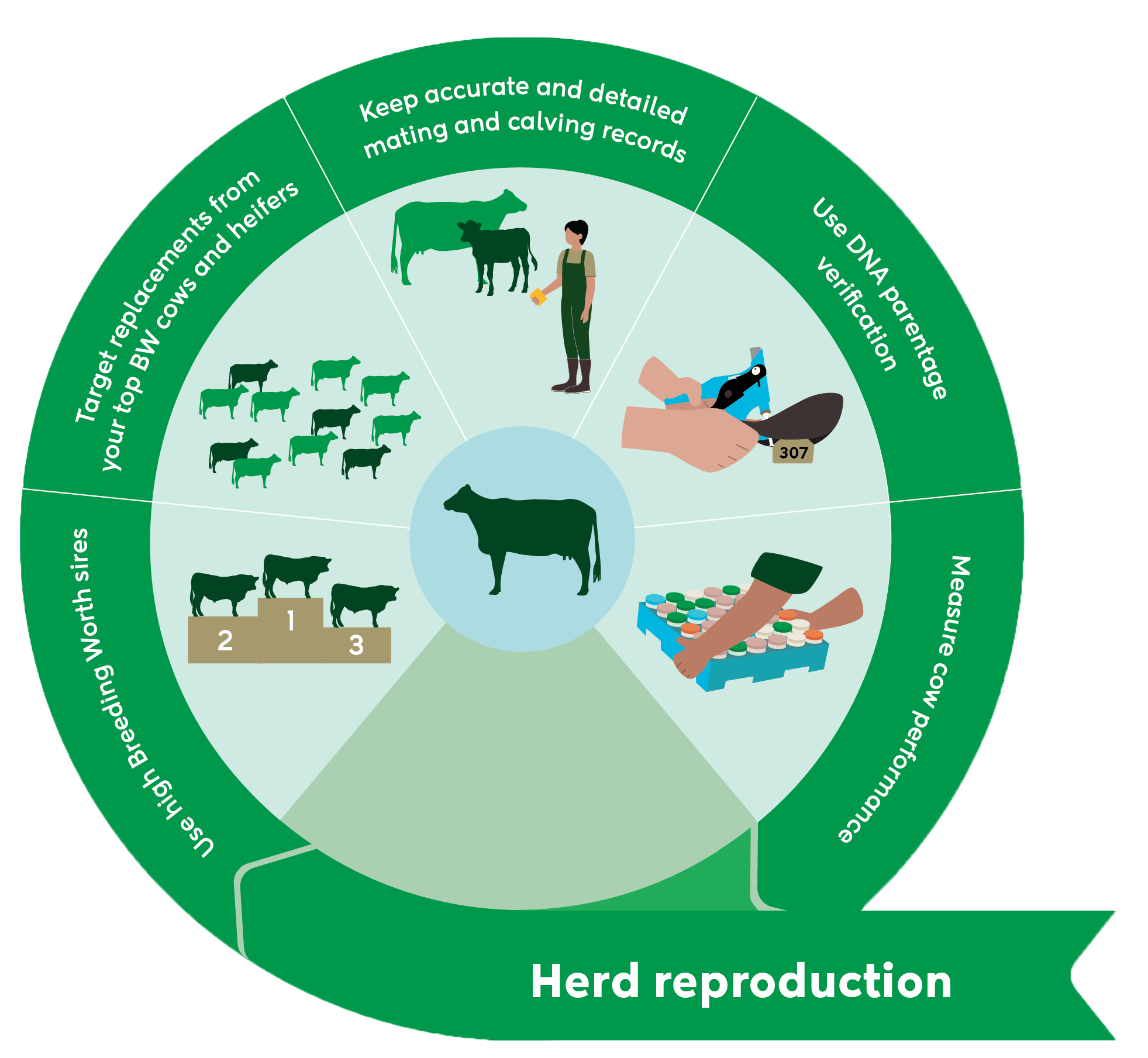
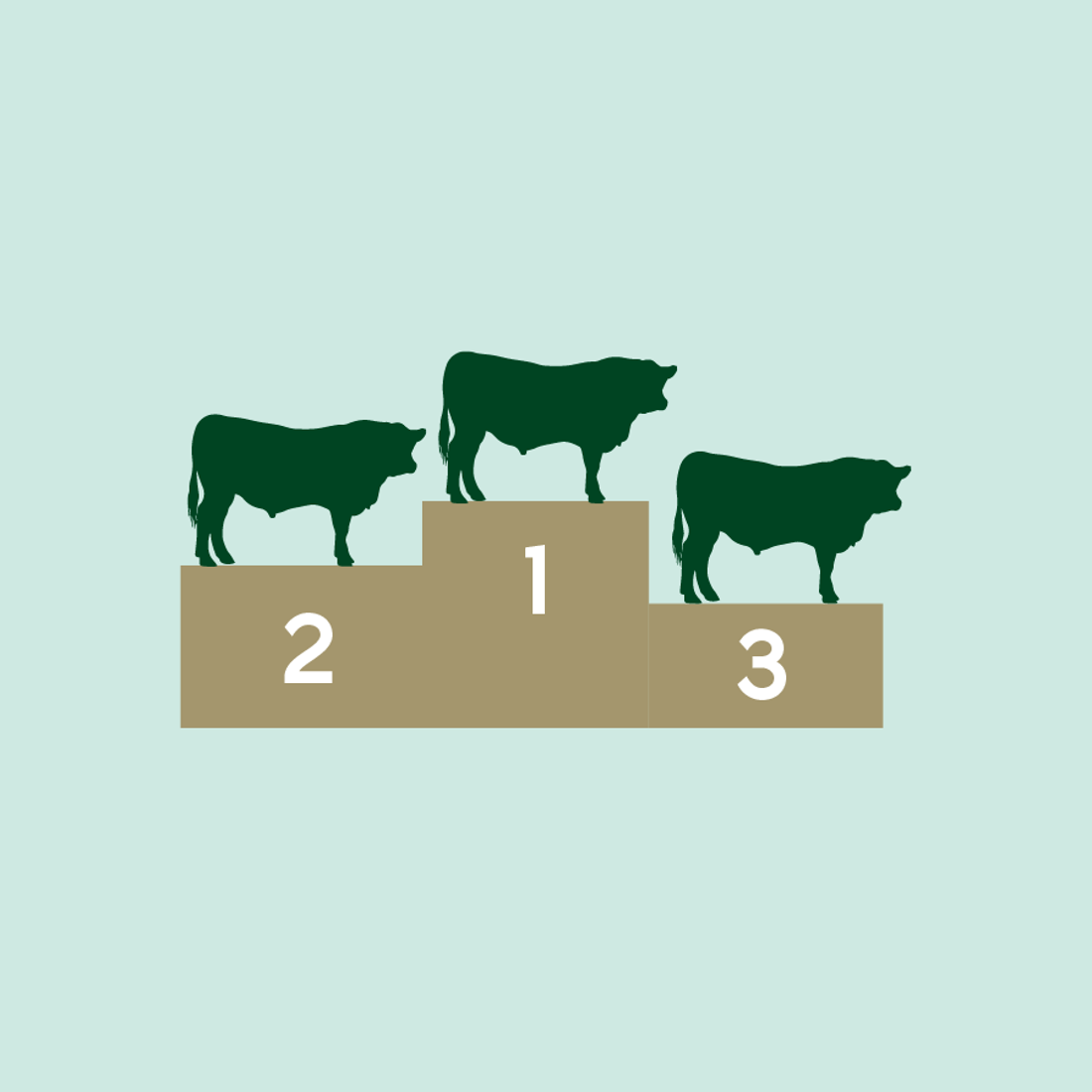
If you can only do one thing – choose high BW sires. Select the bulls that aligns with your goals for the animals you want to be milking. The higher BW of the bulls you use, the faster your herd’s genetic gain.
View the top bulls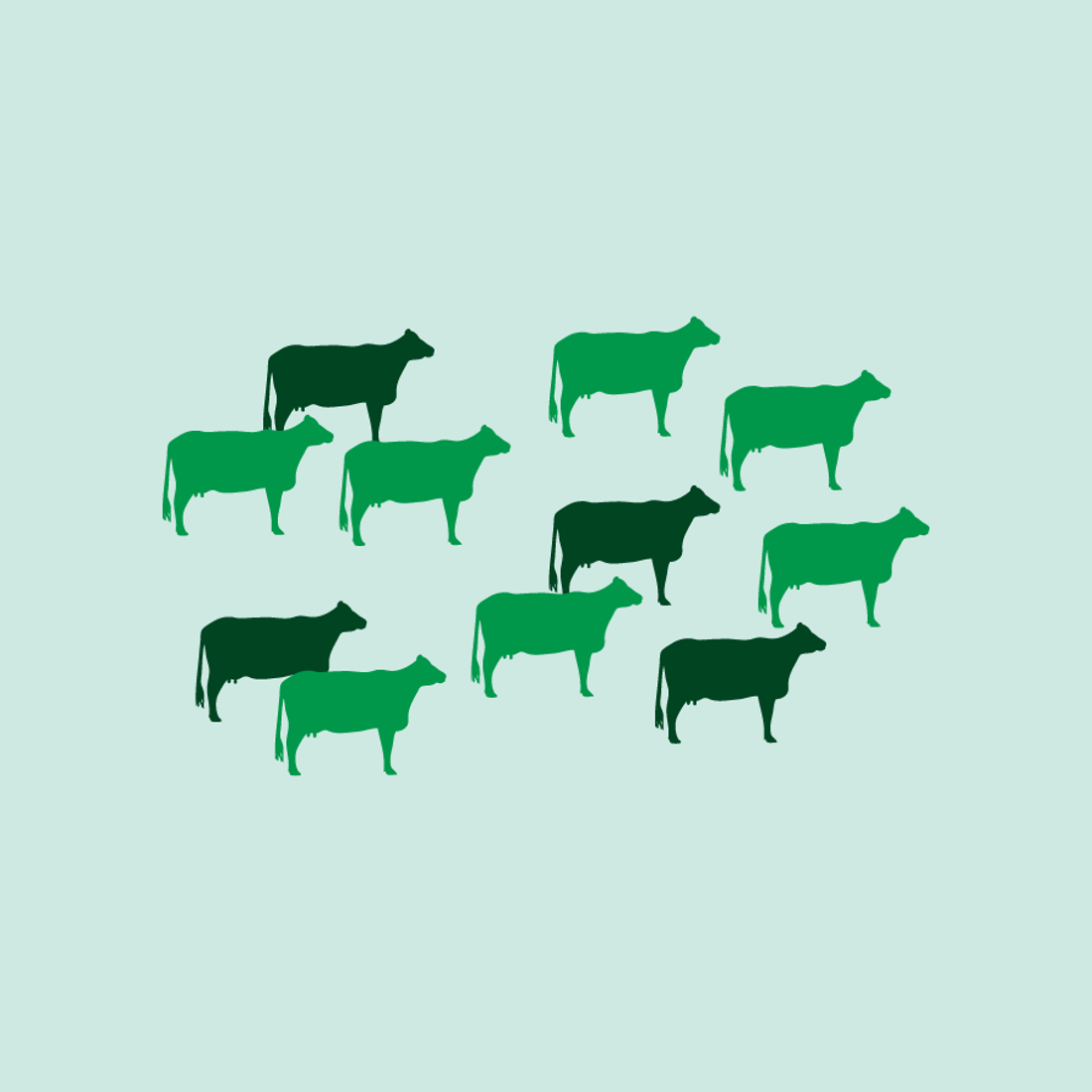
Keeping replacements from top BW cows and using AI over your heifers gives you more options when selecting heifer calves to rear. It also means calves from those top heifers will be in the herd one year sooner – a boost to genetic gain.
Read more on heifer mating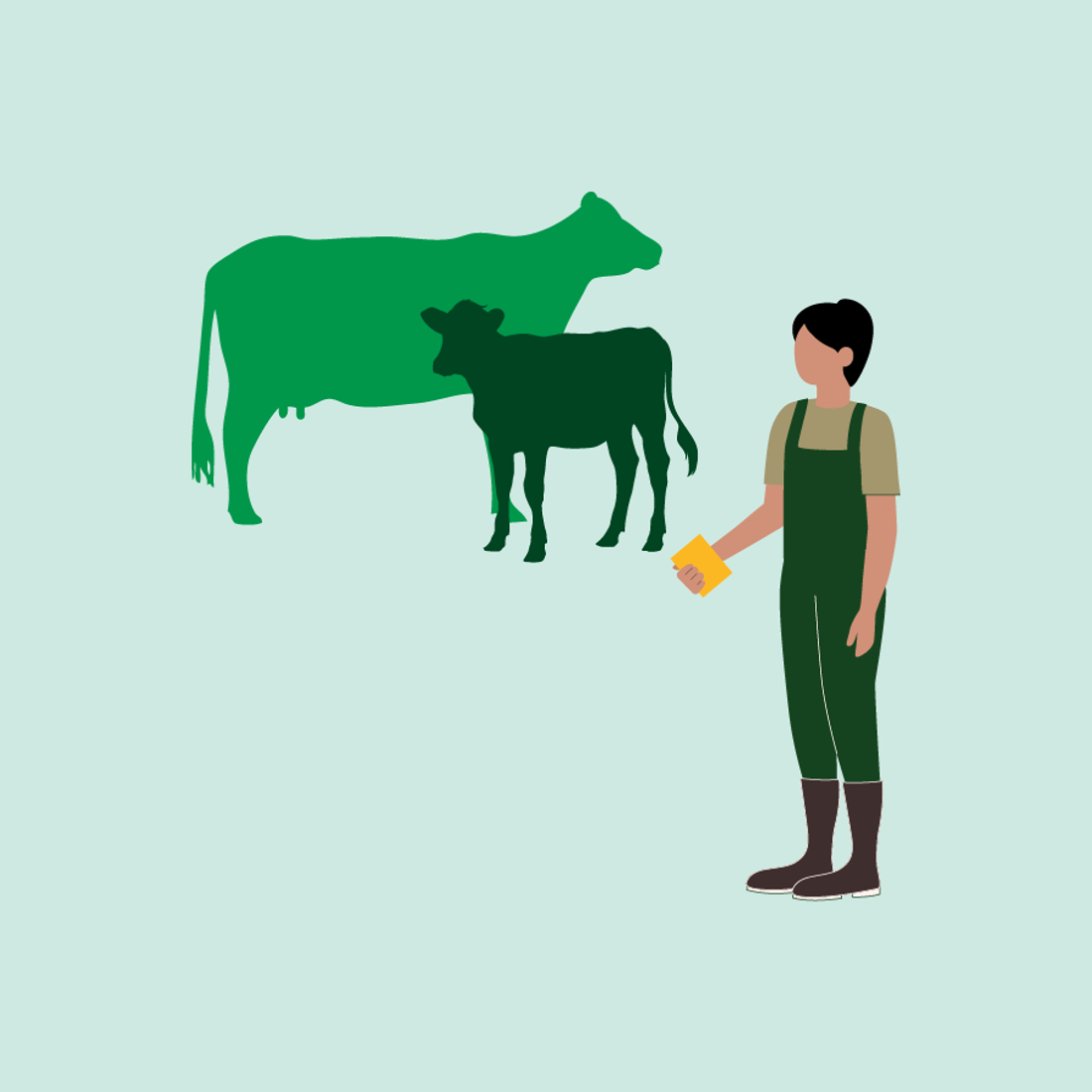
From pregnancy scanning through to accurate calving records, data is key to your herd BW and reproductive performance. Detailed calving and mating records support better mating and culling decisions, including tracking cases of calving difficulties.
Read more on accurate recording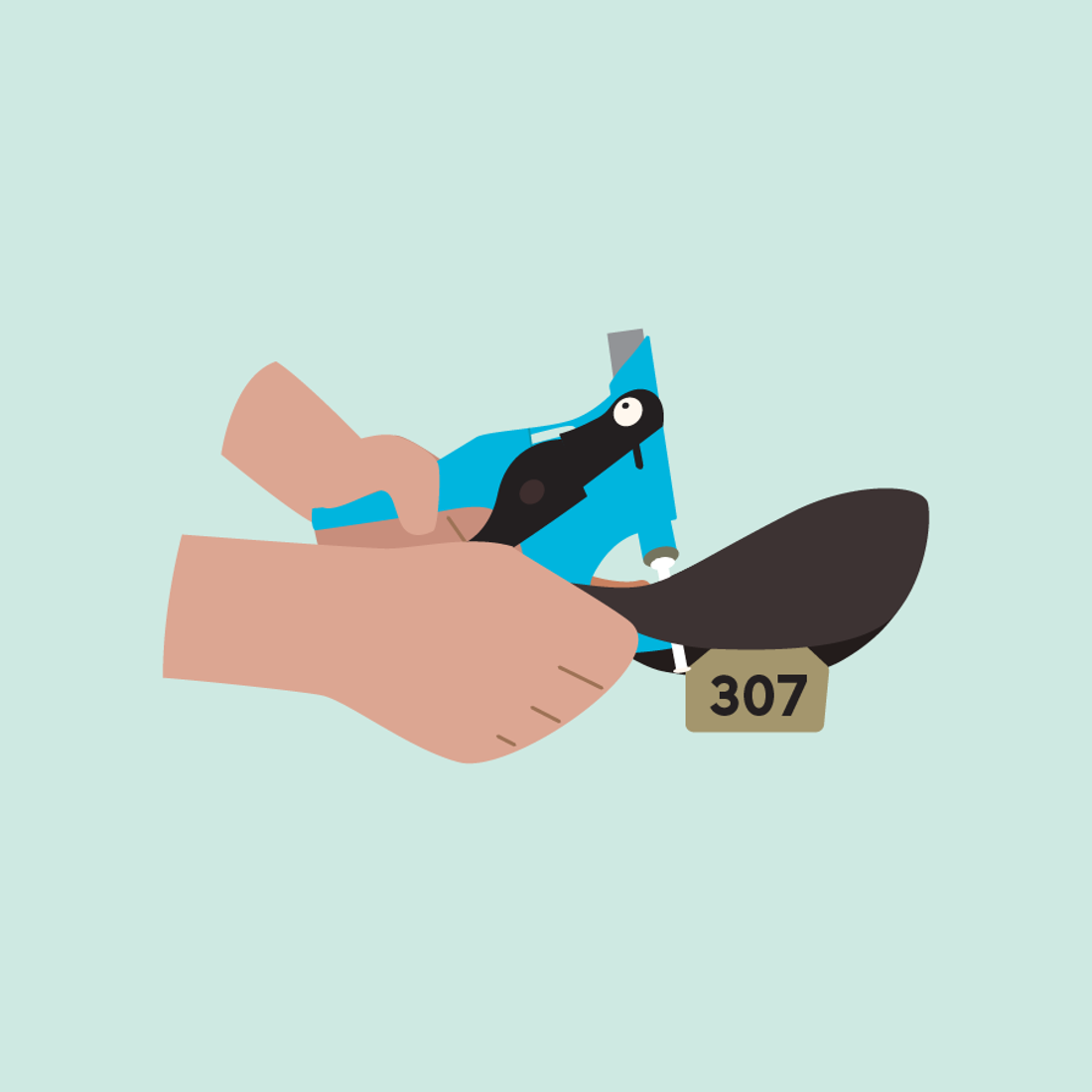
Around 25% of calves are mismothered at birth or when completing data entry. DNA parentage verification helps avoid accidentally keeping replacements from low performing cows, preventing a loss in genetic gain.
Read more on genomics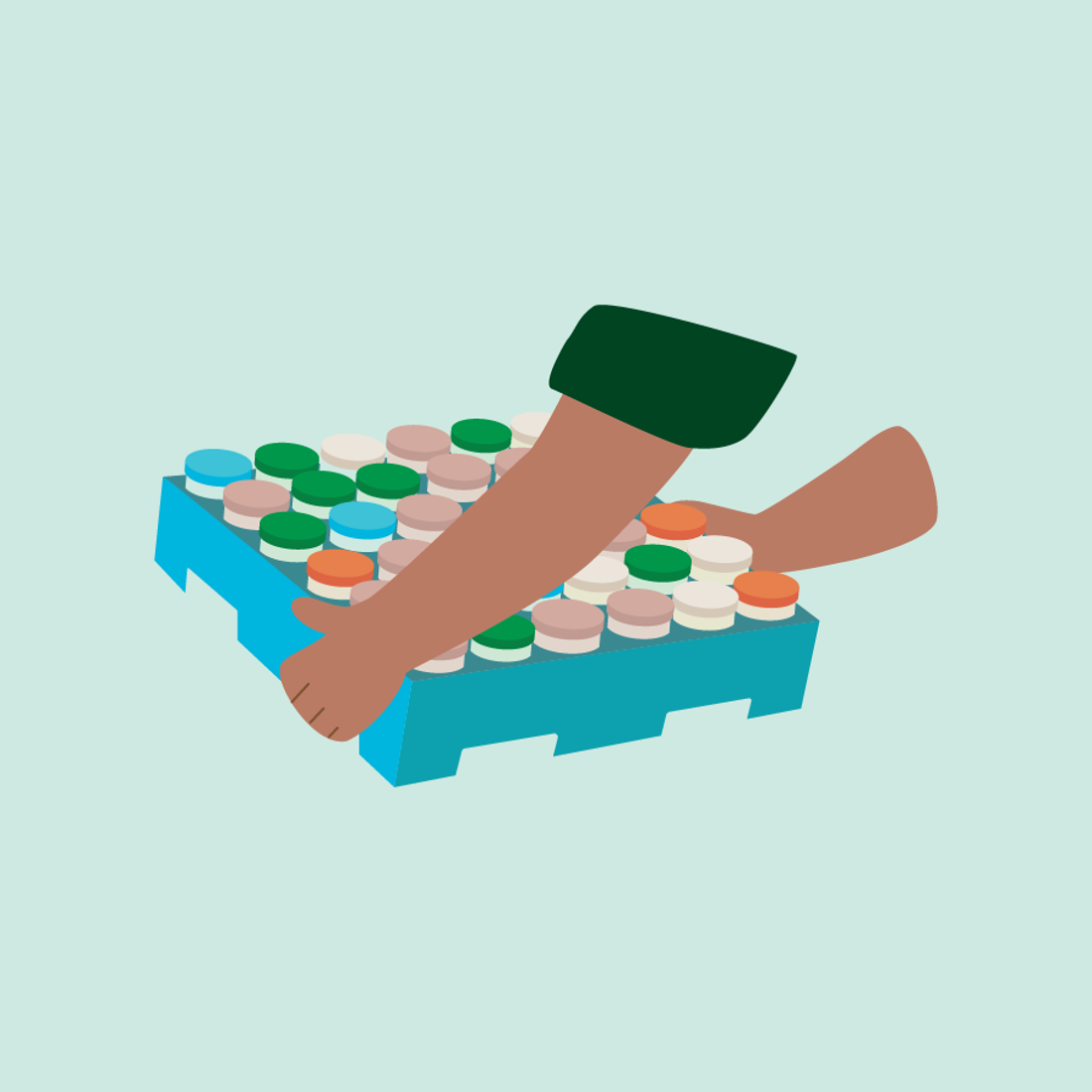
Regular herd testing helps you accurately identify which cows are productive and which cows are costing you. Liveweight is a key component of BW. Consider weighing the herd to gain insights into overall efficiency, and to identify individual cow performance.
Read more on cow performanceNo two bulls are the same. Two bulls can have exactly the same BW but will have reached it through very different strengths.
Which bull is the best?
In the example table below, Bull A has superior milk production traits while Bull B has superior Fertility, Somatic Cell and BCS. Out of these two bulls, the best bull for your herd is the one that fits your breeding objective.
| BULL A | BULL B | |||||
| Trait | BV | BW contribution |
BW $546/75 |
BV | BW contribution |
BW $546/75 |
| Production | ||||||
| Milkfat (kg) | 67 | $353 |
$523 |
55 | $290 | $363 |
| Protein (kg) | 45 | $319 | 38 | $270 | ||
| Milk Volume (L) | 699 | -$80 | 866 | -$100 | ||
| Liveweight (kg) | 41 | -$69 | 58 | -$97 | ||
| Robustness | ||||||
| Fertility (%) | 1.5 | $9 | $23 | 6.8 | $40 | $183 |
| Gestation length (days) | 1.3 | -$3 | -8 | $10 | ||
| SCC (score) | -0.09 | $4 | -0.75 | $35 | ||
| Functional survival (%) | 2.5 | $5 | 4.4 | $8 | ||
| BCS (score) | -0.02 | -$3 | 0.33 | $58 | ||
| Udder overall (score) | 0.2 | $11 | 1.2 | $32 | ||
Choosing the right genetics is crucial for New Zealand's pasture-based grazing systems. The performance of international bulls’ daughters depends on how similar the environment and farming systems are. This means that how well daughters perform overseas doesn’t always indicate how they’ll do here.
Now’s the perfect time to check in, plan, and set up for a strong season. We’ve pulled together smart tips and tools to help you stay ahead all winter long.
Whether you prefer to read, listen, or download handy guides, we’ve got you covered with trusted tools to support your journey every step of the way.
Put our proven strategies and seasonal tools to work. Boost production, support animal health and watch your profits hum.
Tools that are backed by science, shaped by farmers and made for this season.
That’s Summer Smarts.